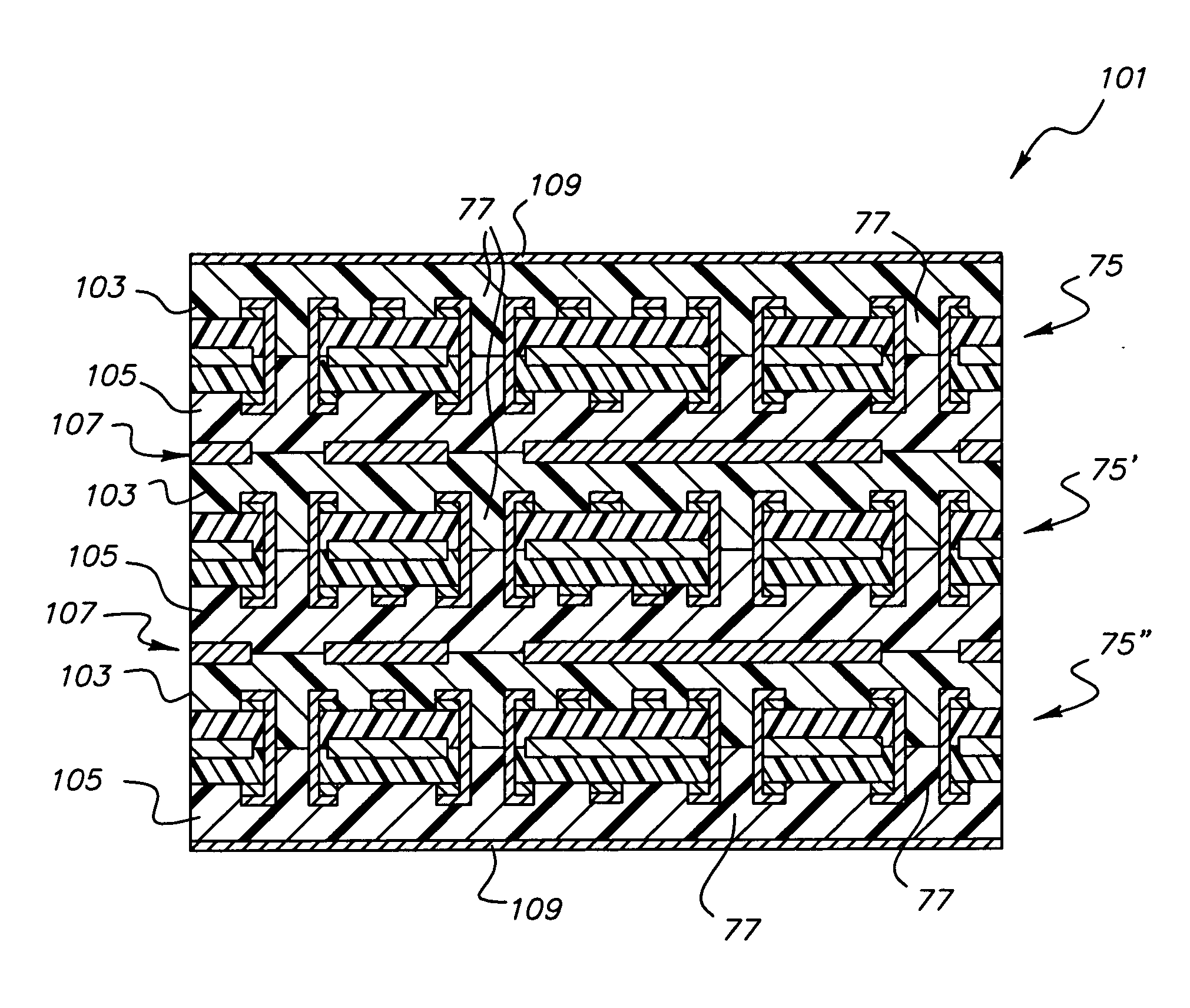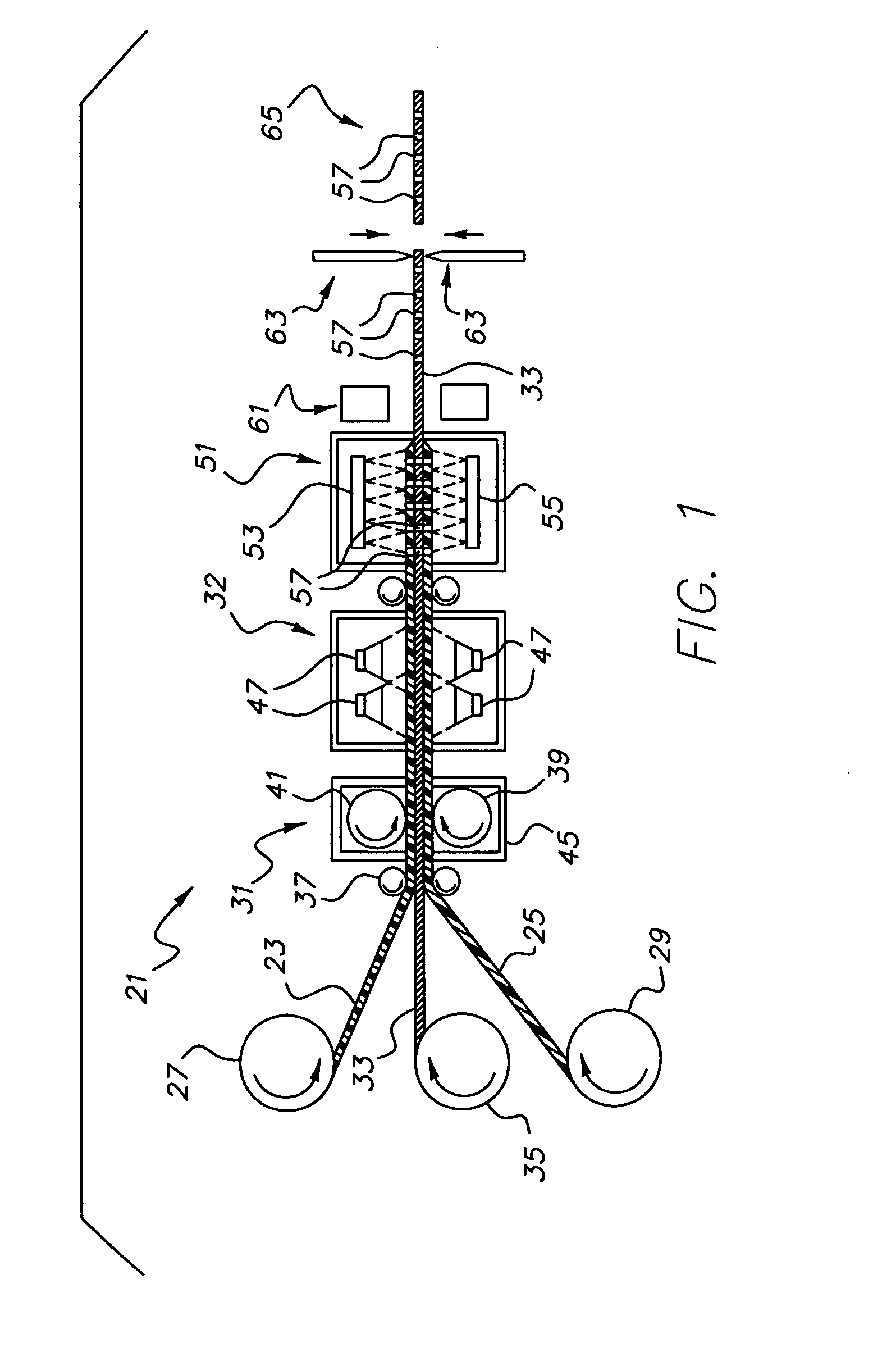Method for making a multilayered circuitized substrate
a circuitized substrate and multi-layer technology, applied in the direction of lithographic masks, etching metal masks, conductive pattern formation, etc., can solve the problems of large variation in the quality of thru-holes, large through-holes, and large through-holes, so as to improve the circuitized substrate art
- Summary
- Abstract
- Description
- Claims
- Application Information
AI Technical Summary
Benefits of technology
Problems solved by technology
Method used
Image
Examples
Embodiment Construction
[0027] For a better understanding of the present invention, together with other and further objects, advantages and capabilities thereof, reference is made to the following disclosure and appended claims in connection with the above-described drawings. It is understood that like numerals will be used to indicate like elements from FIG. to FIG.
[0028] By the term “sub-composite” as used herein to define a substrate construction is meant a substrate including at least one dielectric layer and at least one conductive layer bonded thereto, this “sub-composite” adapted for being bonded to other similar sub-composites to form a larger, multilayered circuitized substrate.
[0029] By the term “continuous” as used herein when defining the process to manufacture the conductive layers which will each form an important part of the sub-composites herein is meant that this conductive layer will be in the form of a continuous layer, up to the point of final segmenting thereof to define the layer's ...
PUM
| Property | Measurement | Unit |
|---|---|---|
| Temperature | aaaaa | aaaaa |
| Thickness | aaaaa | aaaaa |
| Dielectric polarization enthalpy | aaaaa | aaaaa |
Abstract
Description
Claims
Application Information
 Login to View More
Login to View More - R&D
- Intellectual Property
- Life Sciences
- Materials
- Tech Scout
- Unparalleled Data Quality
- Higher Quality Content
- 60% Fewer Hallucinations
Browse by: Latest US Patents, China's latest patents, Technical Efficacy Thesaurus, Application Domain, Technology Topic, Popular Technical Reports.
© 2025 PatSnap. All rights reserved.Legal|Privacy policy|Modern Slavery Act Transparency Statement|Sitemap|About US| Contact US: help@patsnap.com



